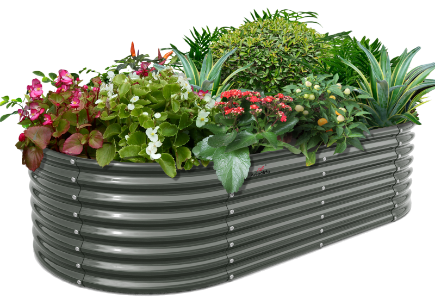Understanding Soil Quality
One of the most crucial factors in maximizing yield in your vegetable garden is understanding the quality of your soil. Different vegetables thrive in different soil conditions, so it's important to test the pH levels and nutrient content of your soil before planting. For example, tomatoes prefer slightly acidic soil with a pH of 6.0-6.8, while carrots thrive in well-drained, sandy soil with a pH of 6.3-6.8. By understanding the specific needs of your vegetables, you can make necessary amendments to the soil to ensure optimal growth and yield.
Companion Planting for Increased Yield
Another effective strategy for maximizing yield in your vegetable garden is companion planting. This technique involves planting certain vegetables together to enhance growth, deter pests, and maximize space utilization. For example, planting basil alongside tomatoes can improve the flavor of the tomatoes and repel pests, while growing beans with corn can provide natural support for the corn stalks. By strategically planning your garden layout and incorporating companion planting, you can maximize the yield of your vegetables while promoting a healthy ecosystem within your garden.
Utilizing Vertical Gardening Techniques
When space is limited, vertical gardening techniques can be a game-changer for maximizing yield in your vegetable garden. Utilizing trellises, stakes, and hanging planters can help you make the most of your available space and increase the productivity of your garden. Vining vegetables such as cucumbers, peas, and squash are particularly well-suited for vertical gardening, as they can climb and spread upwards rather than taking up valuable ground space. By incorporating vertical gardening techniques, you can optimize your garden's yield without sacrificing space.
Implementing Proper Watering and Mulching Practices
Proper watering and mulching practices are essential for maximizing yield in your vegetable garden. Different vegetables have varying water requirements, so it's important to water them accordingly to prevent under or over-watering. Additionally, applying mulch around your plants can help retain moisture, regulate soil temperature, and suppress weed growth, all of which contribute to increased yield. For example, mulching around tomato plants can prevent soil-borne diseases and maintain consistent soil moisture, leading to healthier plants and higher yields. By implementing these practices, you can ensure that your vegetables receive the water and protection they need to thrive.
Maximizing yield in your vegetable garden requires careful planning, strategic planting, and proper maintenance. By understanding the specific needs of your vegetables, utilizing companion planting and vertical gardening techniques, and implementing proper watering and mulching practices, you can optimize the productivity of your garden and enjoy a bountiful harvest of fresh, homegrown vegetables.

